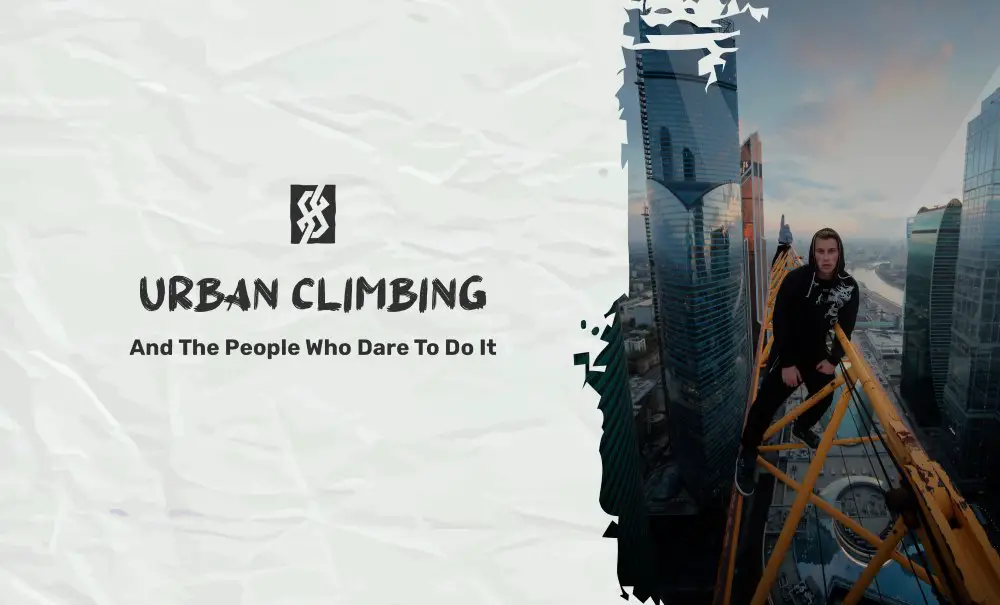Climbing, just like anything else, is an addiction.
While out on route, on the summit or even at the base of whatever climb you have been obsessing over, there is a chemical reaction in the brain. Pretty much just endorphins with a dash of adrenaline. Science aside, there is also that unspeakable element that draws us all back.
Whatever your chosen pursuit, climbing is a drug; a siren song that penetrates every resistance and draws all its supplicants back. The fight, the strength coursing through the body, the unrelenting desire to see this wild horse finally broken… It’s an unending chase.

Sometimes, the pathological need to climb is not exorcised by time spent on the rock – that elevation of spirit is sticky and clings jealously to our minds, permeating every aspect of our day-to-day lives. When we can’t let go, we start to notice other features, walls, faces, pillars and cracks that are just asking to be climbed. At this point, even buildings, those monuments to human civilization, seem a likely pursuit. It is then that we turn our attention to Urban Climbing or urban bouldering aka buildering.
What is Urban Climbing?
While it may appear as sort of a “punk rock” pursuit, urban climbing – or ‘Buildering’ – is starting to become a legitimized practice within the greater world of climbing. At its bones, it is the scaling of any man-made structure – high rises, low rises, skyscrapers, bridges, etc – almost as if it were any other rock face.
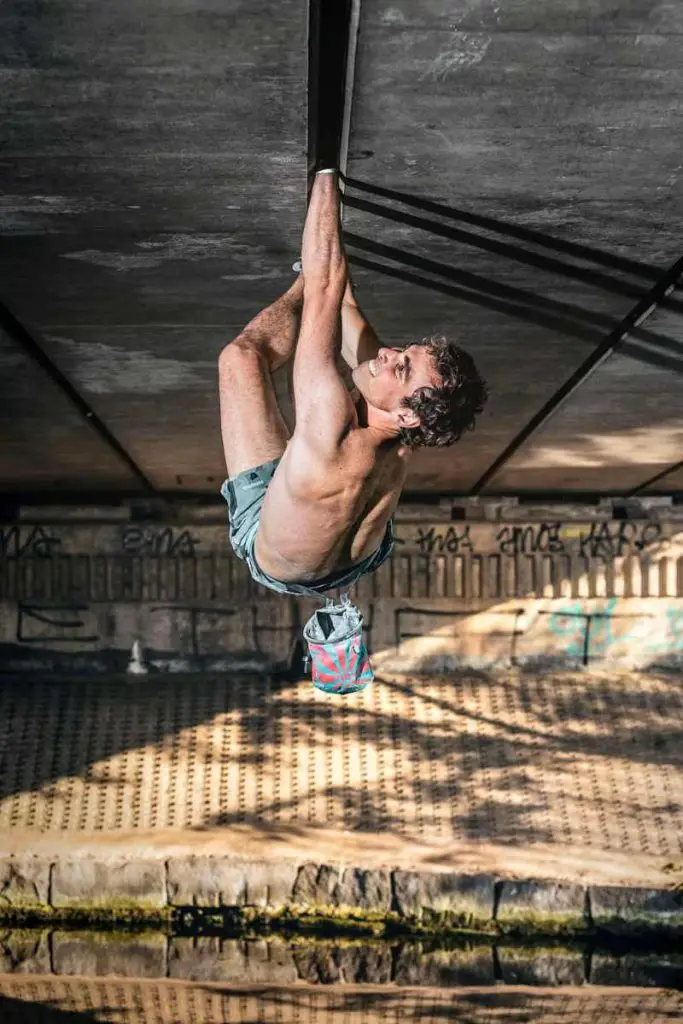
A Blurry History
No matter how low the numbers might be, people have undoubtedly been climbing tall buildings since they have been around for them to climb. And yet, there is no real timeline in the life of urban climbing. At its core, it has always been more of a fringe practice, one that many – including and especially municipal authorities – view as taboo.
While there are few, if any, laws that expressly prohibit the ascent of urban structures, it seems to have taken on a level of secrecy on par with B.A.S.E. jumping in America’s national parks – something that, for fear of prosecution, people try to do under the radar. Still, there are places in the world with a greater level of tolerance for these “urban monkeys.”
Modern Acceptance
In Germany, the German Alpine Club, or Deutscher Alpenverein (DAV), has gone to great lengths to legitimize urban climbing, viewing it not just as another training opportunity for more serious alpine objectives, but as a bona fide concept all its own. There are even guidebooks, documenting established routes all over the country! Alex Megos, currently one of the strongest climbers in the world, is known to have been tutored by the likes of Udo Neuman, the head coach of DAV’s buildering team, and has undoubtedly dabbled, himself.
Real Rock: An Urban Climbing Experience (Short Film)
Buildering has gained more widespread appeal in the U.S., as well, and almost as a counter-culture movement. In 2019, Outside sponsored Coloradan Drew Herder, self-described builderer, in his production and co-direction of a tongue in cheek mini-documentary Real Rock: An Urban Climbing Experience. This documentary follows real life urban climbers, mostly in Boulder, CO and Tuscon, AZ, as they look for the next great buildering line!
This movie is fantastic because it sort of makes fun of itself but at the same time consciously establishes urban climbing as a sport of its own. In the end, it lends itself credibility best by featuring appearances of professional climbers. Timmy O’Neil, for example – professional climber and philanthropist, well-known for his accomplishments across the globe – has had a penchant for buildering for many years. They even give him the loving moniker “The Urban Ape,” in the film.
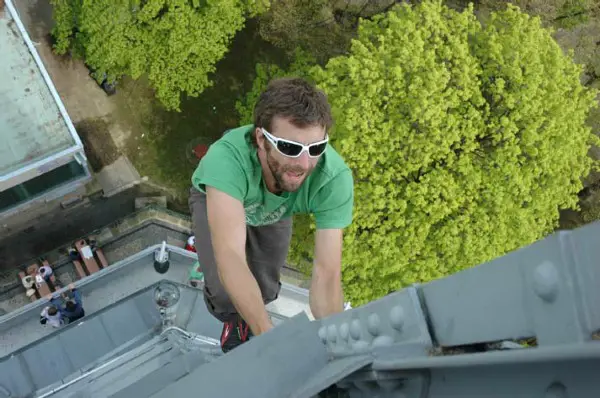
Although the filmmakers make light of themselves and what they are doing, both the featured climbers in this film – as well as anyone else engaging in this practice – are taking legitimate risk. Most of the time, they are unroped and are all but free-soloing.
The consequences for falling are no less real than in the mountains, as a fall pretty much means your body splattering onto the concrete. In this lens, it is just as serious as real rock climbing.
Famous Urban Climbers
Bridge Boyz a.k.a Wide Boyz
Urban climbing has even achieved the spotlight in more mainstream climbing media, including and especially in Reel Rock 16: Bridge Boyz – Tom Randall and Pete Whitaker’s, known for their iconic ascent of Century Crack, decided to ascent of a 2,000-foot horizontal crack system along the underside of a bridge in England, where they briefly adopted the name, Bridge Boyz.
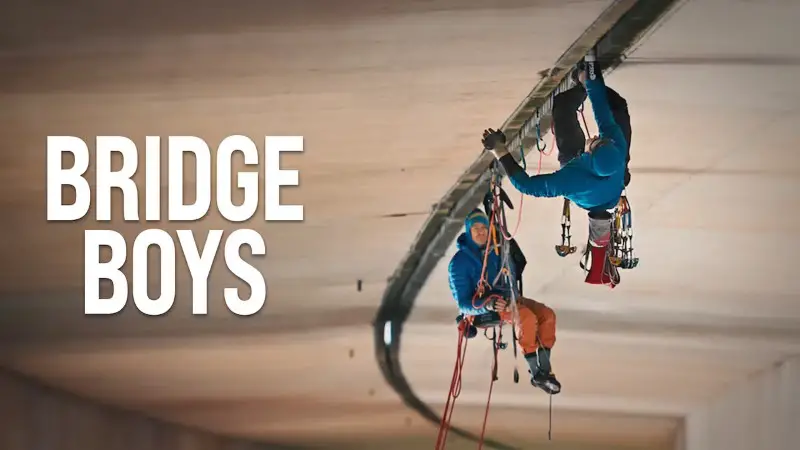
During the Covid-19 pandemic, unable to travel and work on their outstanding crack projects in areas like Indian Creek, UT, these Wide Boyz were more or less relegated to their basement training facility. Not long into quarantine, just like the rest of us, they got a little stir-crazy. Before long, they began to cast their gaze around their immediate environment.
With a little imagination and a hell of a lot of ground support, they planned and executed what might be the first multi-day ascent in the history of urban climbing. At the end of the project, Pete Whitaker was quoted saying “It’s monumentally stupid, but also a massive climbing achievement.”
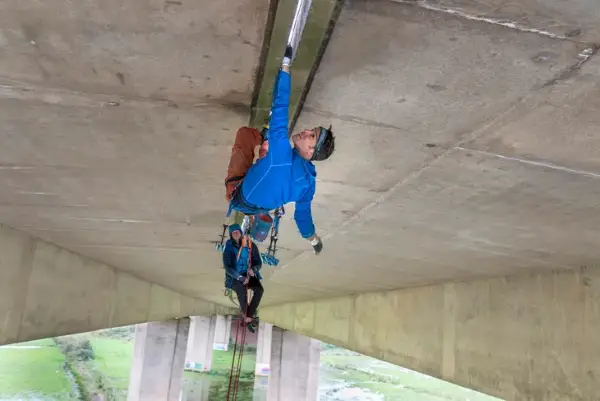
Alain Roberts (The French Spider-Man)
Another daredevil in the world of buildering is a French climber named Alain Roberts, A.K.A., The French Spider Man. Alain Roberts is an amazingly prolific rock climber, one of the best free soloist and OG builderer, boasting nearly one hundred significant ascents just in the urban world. But the truly amazing thing about him is that, while other builderers, like Dan Goodwin relied on equipment to scale many of the same buildings, Robert has free-soloed all but a fraction of them.
His approach has not often put him on friendly terms with local authorities. However, in recent years, he has operated more within the boundaries of the law, obtaining permission from relevant authorities as well as sponsorships for his ascents.
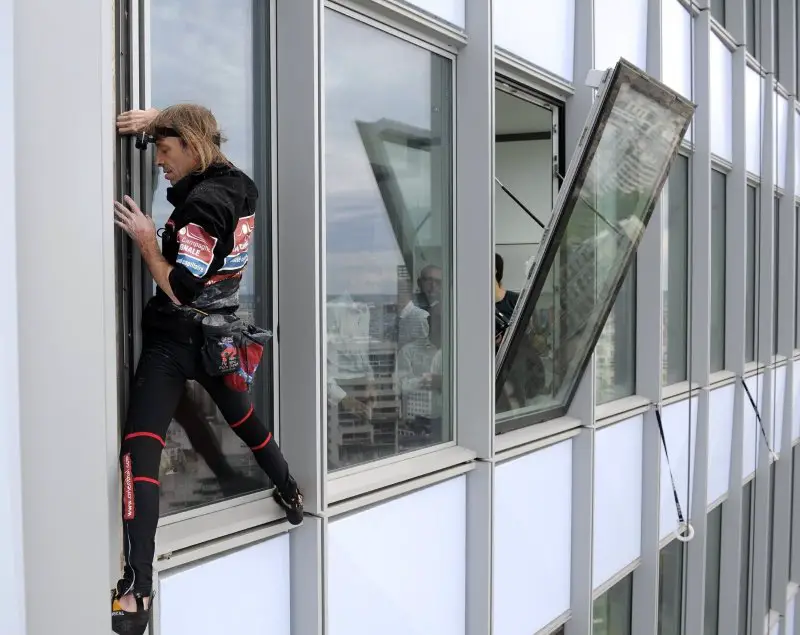
Roberts has climbed most of the tallest buildings in the world, but some of them still bear mentioning. In 1996 and 1997, he free-soloed the Eiffel Tower in Paris, France – 1,027 feet. In 1999, he repeated Dan Goodwin’s ascent of the Willis (Sears) Tower in Chicago, without suction cups and sky hooks.
Perhaps Roberts’ most significant ascent, however, is his 2011 climb of the tallest building in the world: Burj Khalifa, United Arab Emirates – 2,717 feet. His climb of this titan was done with the partial use of a safety vest. Still, it remains in the history books as the highest building ever scaled by a human.

“Spider” Dan Goodwin
A personal hero of mine is a man named Dan Goodwin, A.K.A. Spider Dan. Goodwin was an exceptionally strong climber in the 1980s and 1990s, on par with the then big-dogs of the climbing world. He helped to pioneer many of the harder sport and trad lines across the nation and is an extremely accomplished free-soloist.

But at a certain point, neither the conventions of roped climbing nor the thrills of run-of-the-mill free-soloing seemed to be enough for this guy. It was then that he started casting his gaze sky (scraper) wards.
In 1981, armed with a small collection of suction cups and sky hooks, Goodwin scaled what was then the tallest building in the world: The Sears Tower in Chicago, 110 stories and 1,454 feet. He did this, he claims, to point out the shortcomings in the response plan of the fire department during a skyscraper emergency, arguing that there should be a designated tactical climbing team to assist in the extraction of people who may become trapped during a fire. But knowing Goodwin’s track record, it’s not hard to imagine he also did it JUST for the fun of it.
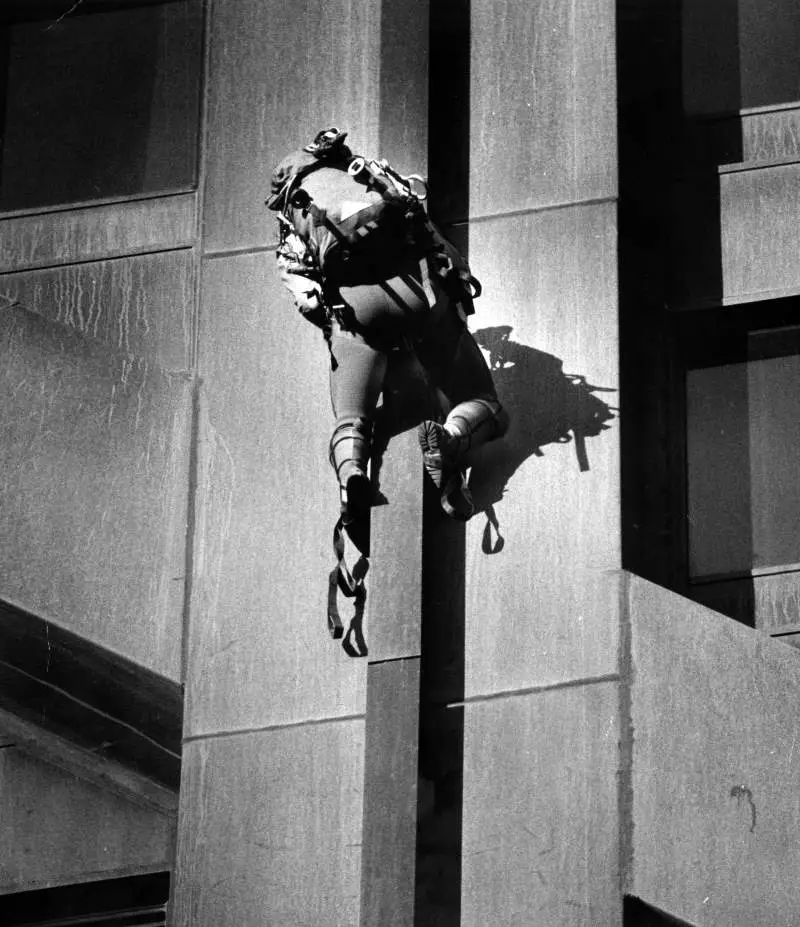
On the day in question, the Chicago fire department infamously tried to force Goodwin to halt his ascent by using a fire hose to send water down the side of the building from above. After he reached the “summit,” Goodwin famously sued the city of Chicago for attempted murder and won, securing a sizeable amount in the settlement. Talk about a victory for the good guys.
Using a variety of tools, Goodwin would go on to scale numerous of the planet’s tallest buildings. The John Hancock Center in Chicago, 1981 – 100 stories; The World Trade Center in New York City, 1983 – 110 stories; The CN Tower in Toronto, Canada, 1986 – 100 stories. This last, he did twice in the same day, entirely free solo.
Alexis Landot
Alexis Landot, a 23-year-old French climber, has made a name for himself in the world of buildering. He posts about all his daring ascents on his YouTube channel and has amassed quite the following! Among his most notable feats is the climb of the Mercuriales Towers, a 122-meter tall building in the Paris suburbs.

Urban Climbing Deaths
Surprisingly, there have been very few deaths reported in the world of urban climbing. Perhaps this has something to do with there being fewer objective hazards as in the mountains; rockfall, severe weather patterns, etc. However, even in an urban environment, the threat of death is far from absent.
Urban climber and French Instagram personality, Remi Lucidi, passed away just this year during a stunt where he climbed out onto the exterior of Tregunter Tower in Hong Kong for a photo opportunity/scouting mission for a potential free-solo ascent. Through some misstep, he fell approximately 68 stories. Authorities pronounced him dead on arrival.
There have been others to fall from rooftops, but without exception, they seem to have less involvement with buildering as they do with maintaining an Instagram image.
Urban Climbing Is Not For Everyone
Public attitudes toward urban climbing has always been divided. Most people are content to sit back and spectate in silent wonder. Others might sneer their ire raised at the mere existence of rebels like these who will scale a building just for the fun of it.
There are even those within the climbing world who harbor hostile feelings toward these ‘pioneers of the urban.’ Some say that it isn’t really climbing, that its not to be taken seriously. Some just see it as sketchy. But aren’t these just the same old complaints, recycled from days when a new and dangerous idea comes along and threatens the status quo?
Follow up question: hasn’t every single stage of development in the climbing world been met with the same resistance? Come off it and embrace change!
Anyway, watch the Wide Boyz doing Wide Boy things:
Header image: KEO FILMS / Red Bull Content Pool



